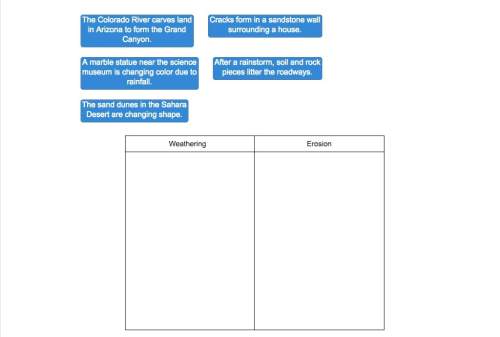
Biology, 26.08.2020 09:01 chrisholmes176
Many farmers and gardeners compost their plant and animal waste. The living material naturally decays in compost bins,
forming a dirt-like substance that's rich in nutrients. The next season, farmers use this substance as a natural fertilizer for
their crops.
A biology student has grown tomato plants for several yehrs. Until now, he used an artificial fertilizer formulated for
tomato plants. This fertilizer caused his plants to grow faster and taller than they grew in unfertilized soil. The student
wants to know whether using natural compost will cause his tomato plants to grow faster and taller than his artificial
fertilizer
Answer the following questions to plan an investigation using the steps of the scientific method and help the student find
the answer to his question.
What’s the students scientific question? Construct at least possible hypothoses for the students experiment.
Construct at least two possible hypothoses for the student expirement.

Answers: 2


Another question on Biology

Biology, 21.06.2019 13:00
Biologists use the system of binomial nomenclature developed by linnaeus to assign scientific names to known living organisms which area of society or strengthened by money is contribution to science
Answers: 3

Biology, 22.06.2019 01:30
Twin boys have girlfriends one of the couples have a baby would the dna of the lil baby be the same as the couples dna bc the boys are identical twins
Answers: 1

Biology, 22.06.2019 03:30
Rease is an enzyme used by plants to break down urea (a nitrogen-containing compound) into carbon dioxide and ammonia. urease urea > > > carbon dioxide and ammonia ammonia is broken down by plants into a nitrogen source plants need to grow. thus, plants could not use urea as a nitrogen source unless it was first converted to ammonia. in soybean plants there are two different kinds of urease, one produced in the seeds and the other produced in the leaves of the plant. three types of soybean plants were used in a set of experiments: normal soybeans and two mutant strains, one lacking the urease in the seeds only (strain 1) and one lacking urease in the leaves only (strain 2). experiment 1 separate areas in a field were planted with normal, strain 1, and strain 2 soybeans. all types of soybeans appeared to grow, flower, and produce seeds equally well. there were no externally detectable differences among the strains. experiment 2 small pieces of plant leaves of equal weight were obtained from each type of soybean plant and separately placed on media in culture dishes. tissue growing in this way will become an unorganized clump of cells referred to as callus. to provide a controlled nitrogen source, half the tissue samples of each type were placed on media containing urea, and the other half of the samples were placed on media containing ammonia. after 30 days, the weight gain for each of the callus samples was determined. results are shown in the table below.
Answers: 2

Biology, 22.06.2019 04:30
Which phase of the cell cycle ensures that identical copies of the dna are made for daughter cells?
Answers: 1
You know the right answer?
Many farmers and gardeners compost their plant and animal waste. The living material naturally decay...
Questions

Mathematics, 14.07.2019 03:00


Mathematics, 14.07.2019 03:00



Mathematics, 14.07.2019 03:00




Mathematics, 14.07.2019 03:00



Biology, 14.07.2019 03:00

Mathematics, 14.07.2019 03:00


Mathematics, 14.07.2019 03:00

Chemistry, 14.07.2019 03:00

Mathematics, 14.07.2019 03:00

Mathematics, 14.07.2019 03:00

Mathematics, 14.07.2019 03:00




